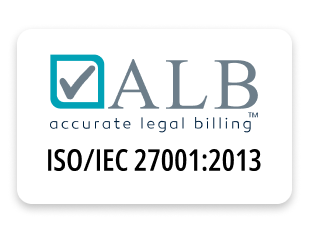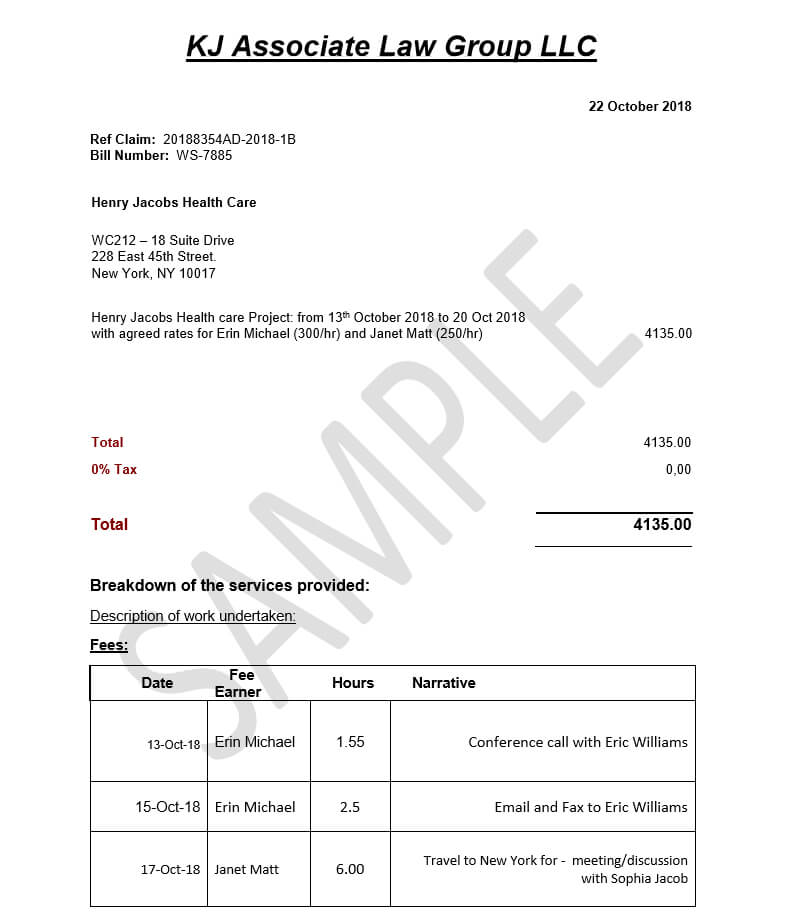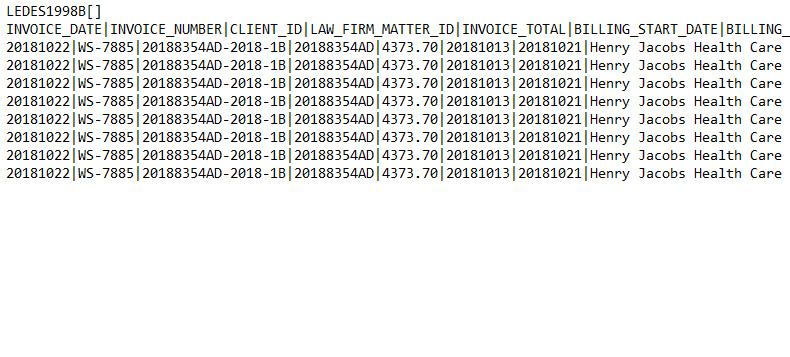
E-billing and its Impact on Law Firm Profits
Reports on law firm performance from 2019 paint a rosy picture of increased profits despite flat demand for services. How could this be? In many cases, this is due to firms continuing success with raising billing rates for lawyer time – and having clients pay the bills! While this news is good for some firms, especially the biggest firms, the reality for the rest of the legal industry is somewhat different.
Clients, sensing the flat market while dealing with significant cost constraints of their own are applying ever increasing pressures on law firms through outside counsel guidelines that establish requirements and often lead to lots of back and forth between the law firm and client before a legal bill is settled (if it is in fact paid at all).
Firms need systems in place to help ensure that bills are generated error free, in compliance with client requirements in order to be paid on a timely basis. Some e-billing systems, like Accurate Legal Billing, recognize the challenges that law firms are facing and have been built to provide firms with the support they need.
Rejected!
By some estimates, most law firms find that somewhere between 10-30% of their legal bills are rejected by clients. This is an industry-wide issue. Bills can be rejected for a variety of reasons, and might be for something like non-compliance with billing requirements, but could also be simply at the client’s own discretion. The client is the boss after all, right? After a bill is rejected the billing attorney must then review the rejected bill and identify any issues to resolve. In some cases, attorneys may even have to negotiate the bill with the client. The time lost to remedying billing issues comes directly from the firm’s profits as attorneys lose time they could be billing to other matters. Billing quickly becomes a hidden cost of firm operations.
OCGee whiz!
The growth in popularity of OCGs and the complexity and bespoke-ness of these guidelines poses a new and expanding problem for firms, particularly as relates to billing practices. Managing OCGs is a complex process and requires dutifully logging requirements in a centralized database and then remembering to check this database regularly, especially when billing. The data indicates that most law firms are behind on managing these guidelines with around 20% with no systems in place and 60% with only client-by-client systems in place.
While many law firms feel OCGs are unnecessary, clients are increasingly demanding them as part of their engagements with firms. These guidelines can include a multitude of requirements, for example what types of work a client is willing to pay for (and what the client will not pay for), billing formatting, whether the work can be disclosed (as part of law firm promotional materials), among other things. These guidelines can make working with certain clients difficult, and some commentators in the legal industry speculate that might be the point, but fear not, there are technologies available to help law firms manage OCGs and get bills right from the first time issued.
Firms can rely on technology to help manage these requirements. ALB was developed with strict client requirements in mind. By entering client requirements into ALB, the software can assist lawyers with generating correct, properly formatted bills with the push of a button. If clients are strict about using certain types of words, ALB can learn and assist lawyers with recording their time in accordance with these requirements so that bills do not need to be edited later.
Dear Diary…
Keeping accurate records of billed time in a contemporaneous manner is a proven way to ensure that bills reflect the work that was done for a client. Submitting time entries well after the work is done, in a batch manner, can lead to costly errors that result in write offs, rejected bills, or both – all damaging to firm profits. Many OCGs include rules limiting how much time can pass after work is done before it is billed. Late entries are a simple problem to solve through accurate timekeeping and quick and timely e-billing. Implementing processes and technologies that can allow lawyers to record diary entries as they work will help resolve a major underlying issue affecting law firm profits.
Work smarter, bill smarter
The damaging effects of writing time off is well covered on this blog but it is worth mentioning as part of the e-billing tools discussion how much these tools can help law firms reduce writing off time. Smart, compliance-focused time entry tools that ensure that time is captured in line with OCGs helps to reduce write-offs. Quickly generating and reviewing bills and sending them to clients with efficiency has streamlined the billing process and can result in fewer disputed or unpaid bills. Firms can also better track time being billed in aggregated ways to evaluate how they are serving clients and find ways to improve lines of service to make budgeting work easier and more consistent. This helps with pricing and budgeting, attorney hiring and training, and with identifying growth opportunities for doing new work. E-billing provides efficiency and accuracy and helps firms capture their own data.
Don’t delay, bill today!
Delayed bills mean delayed payments and delayed payments hurt firm realization and cashflow. E-billing tools can help reduce barriers to getting a bill out the door to a client for payment resulting in quicker payment. Legal industry data paints a clear picture of the direct effect that delays in sending bills has on lowering realization rates. The longer a bill sits unsent, the higher the risk that the firm will not be paid for that time. Uncoordinated billing also makes cashflow inconsistent and harder to predict which can in turn have a spiraling effect on firm profits, due to delayed payment of firm debts and added administrative costs for tracking the bills.
Using ALB, firms can produce timely bills that comply with guidelines and send the bills to client for payment using electronic payment options. Time entry software coupled with AI-powered e-billing technology, like ALB, has made billing easier than ever before and helped to improve law firm finances even as factors like OCGs and client budgetary restrictions have made getting invoices paid more challenging.

.png)



